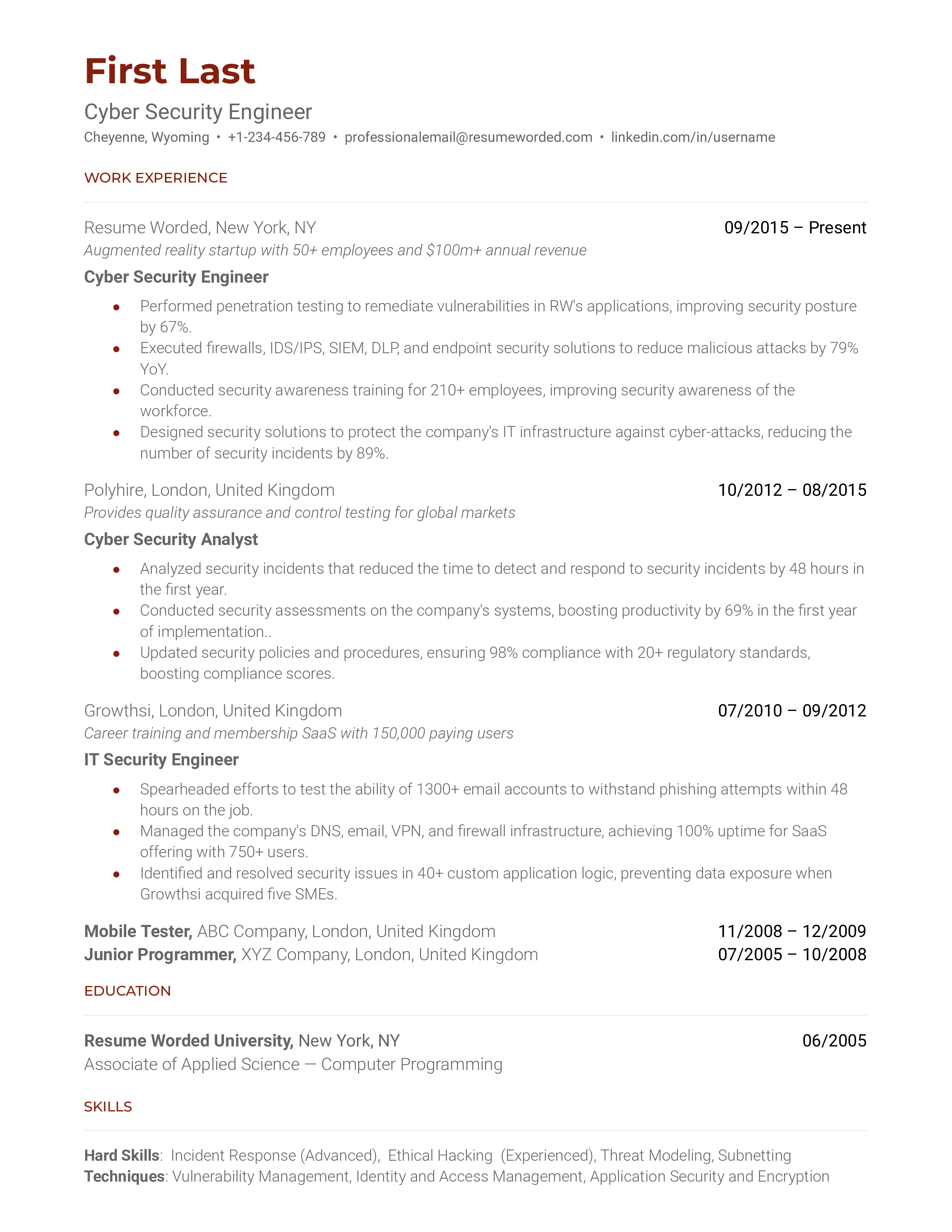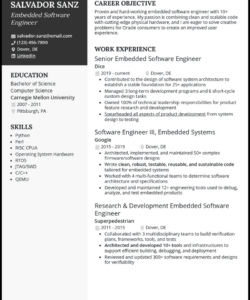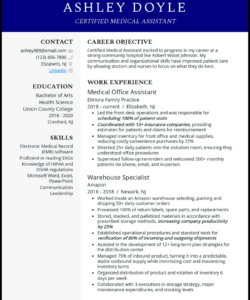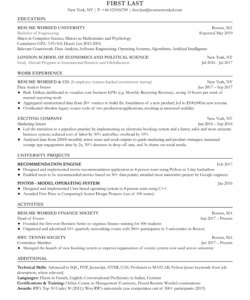Navigating the job market for a cyber security engineer role can feel like cracking a complex code. You have the skills, the dedication, and the technical know-how, but translating all of that onto a single document that truly stands out is often the hardest part. Your resume isn’t just a list of your past jobs; it’s your personal marketing tool, designed to grab the attention of busy recruiters and hiring managers who are sifting through hundreds of applications.
A well-crafted resume is essential to unlock those coveted interview opportunities, especially in a competitive field like cybersecurity. It needs to clearly articulate your value, highlight your most relevant experience, and showcase your expertise in a way that resonates with potential employers. While there’s no magic bullet, understanding the core components and best practices for presenting your qualifications can significantly elevate your application and help you stand out from the crowd.
Crafting Your Cyber Security Engineer Resume: Key Sections to Include
When you’re building a resume for a cyber security engineer position, think of it as your first line of defense in the application process. Each section needs to be strong, relevant, and strategically designed to impress. Starting with a clear and concise professional summary or objective is crucial. This is your elevator pitch, a brief paragraph or a few bullet points at the top that immediately tells the reader who you are, what you bring to the table, and what your career aspirations are. Following this, your skills section becomes incredibly important, as it’s often the first place recruiters look to match your capabilities with the job description.

Showcasing Your Technical Prowess
For a cyber security engineer, your technical skills are paramount. This isn’t just about listing tools you’ve used; it’s about demonstrating your proficiency in various security domains. Be specific about operating systems, networking protocols, security software, programming languages, and cloud platforms you’re familiar with. Don’t forget to include any scripting or automation skills, as these are highly valued in modern security operations. Think about the common challenges cyber security engineers face and how your technical toolkit helps solve them.
Here are some types of skills to consider including:
- Network Security: Firewalls, IDS/IPS, VPNs, routing protocols, SIEM
- Cloud Security: AWS, Azure, GCP security best practices, IAM, security groups
- Incident Response: Malware analysis, forensics, threat hunting, vulnerability management
- Compliance and Governance: NIST, ISO 27001, GDPR, HIPAA, risk assessments
- Security Tools: Splunk, Wireshark, Metasploit, Nmap, Kali Linux, Endpoint Detection and Response (EDR)
- Programming/Scripting: Python, PowerShell, Bash, Java, C++
Beyond skills, your experience section needs to tell a compelling story. Instead of just listing responsibilities, use action verbs and quantify your achievements whenever possible. For example, instead of “Managed security incidents,” try “Reduced average incident response time by 20% by implementing a new automated ticketing system.” Highlight your contributions to specific projects, how you mitigated risks, improved security posture, or saved the company money. Lastly, your education and certifications are vital. List your degrees, relevant coursework, and any industry certifications like CISSP, CompTIA Security+, CEH, or OSCP, as these often serve as baseline requirements for many roles. A well-structured cyber security engineer resume template can help ensure all these critical elements are included and presented effectively.
Tips for Optimizing Your Resume for Success
Beyond just listing your qualifications, the way you present your cyber security engineer resume can significantly impact its effectiveness. One crucial aspect to consider is Applicant Tracking Systems, or ATS. These software programs are often the first gatekeepers, scanning resumes for keywords before a human ever sees them. To pass through, make sure your resume includes keywords directly from the job description. This means tailoring your resume for each application, incorporating specific technologies, certifications, and security concepts mentioned in the posting. Don’t just copy-paste, but integrate them naturally into your bullet points and skills section.
Customization is key. While it might be tempting to use a generic resume for all applications, taking the time to modify your document for each specific role will yield much better results. Research the company’s tech stack, their security challenges, and the specific requirements of the position. This allows you to emphasize the experiences and skills that are most relevant to *that particular* employer, demonstrating that you’ve done your homework and are genuinely interested in their opportunity. This tailored approach shows initiative and a deep understanding of the role.
Professional presentation is another non-negotiable. Choose a clean, easy-to-read font, maintain consistent formatting throughout, and ensure there are no grammatical errors or typos. Proofread tirelessly, or even better, ask a trusted friend or mentor to review it for you. Keep it concise, ideally one to two pages, focusing only on the most relevant information. Recruiters spend only a few seconds on each resume initially, so clarity and impact are paramount.
Always strive to quantify your achievements. Numbers speak louder than words. Instead of saying “Improved security,” try “Improved security posture by reducing critical vulnerabilities by 30% through regular penetration testing.” This provides concrete evidence of your impact and demonstrates your value in measurable terms. If you have a professional portfolio, a GitHub profile with relevant projects, or a blog where you discuss cybersecurity topics, include links to these as well. They can provide additional context and showcase your passion and expertise beyond the confines of a traditional resume.
Crafting a compelling resume for a cyber security engineer position is about more than just listing your past roles; it’s about strategically showcasing your unique value and technical prowess. By focusing on relevant skills, quantifying your achievements, and tailoring your document to each specific opportunity, you significantly increase your chances of landing that coveted interview. Remember, this document is your advocate, working to open doors to exciting career prospects in the ever-evolving world of cybersecurity. With thoughtful preparation and a keen eye for detail, your application can truly stand out.


